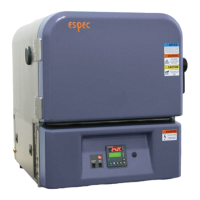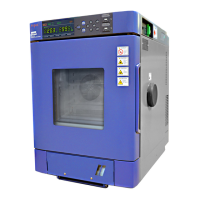What to do if the ESPEC Climate chamber test area temperature exceeded chamber limits?
- IimillerAug 6, 2025
If the ESPEC Climate chamber's test area temperature exceeds chamber limits, it's likely due to a component failure. A thermal fuse replacement is needed. First, remove power from the machine and identify the cause of the overheat. If needed, call for service. After replacing the thermal fuse, reapply power, press the Fault Reset Switch, and turn the Chamber Run Switch to the run position. Monitor the chamber temperature to ensure it stays within the set limit.


